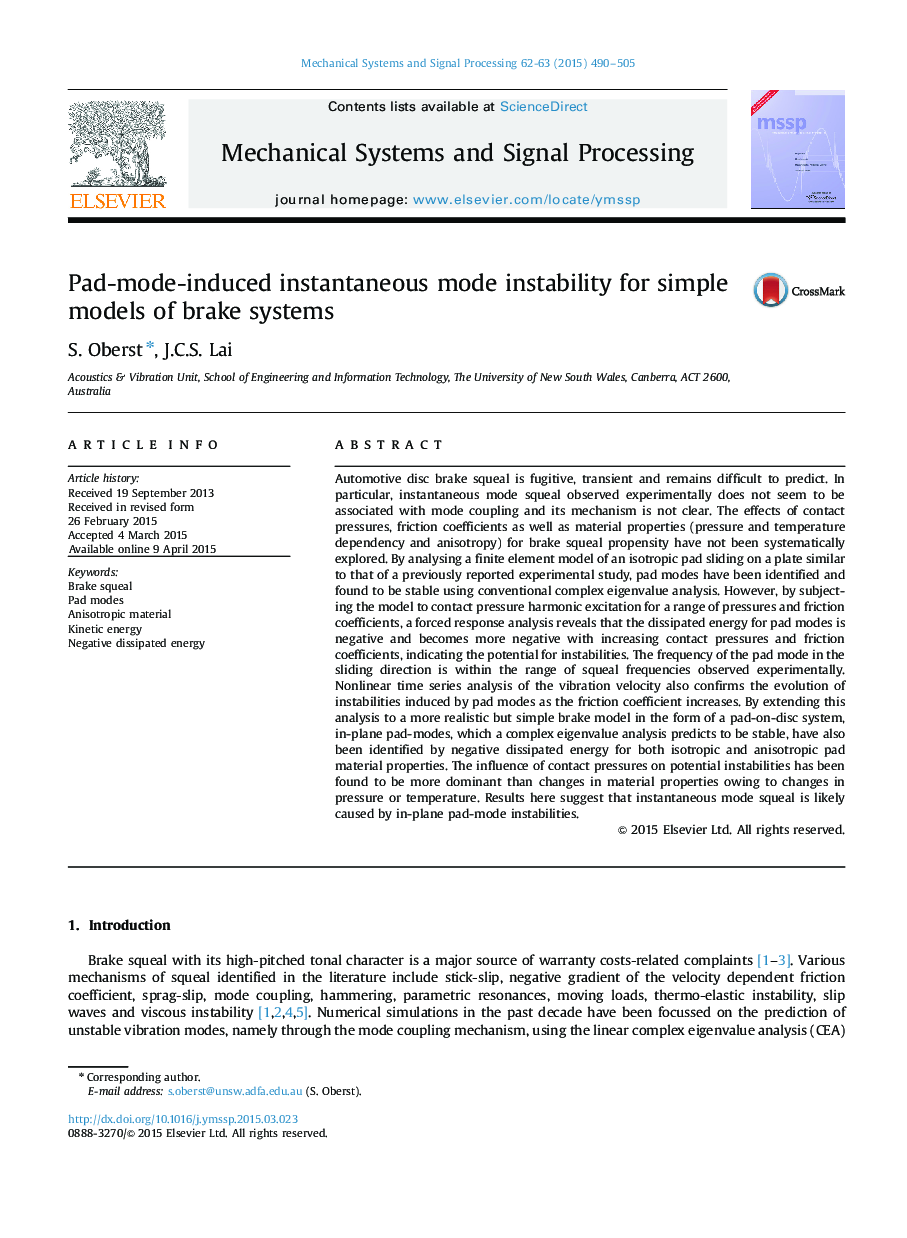| Article ID | Journal | Published Year | Pages | File Type |
|---|---|---|---|---|
| 560165 | Mechanical Systems and Signal Processing | 2015 | 16 Pages |
Automotive disc brake squeal is fugitive, transient and remains difficult to predict. In particular, instantaneous mode squeal observed experimentally does not seem to be associated with mode coupling and its mechanism is not clear. The effects of contact pressures, friction coefficients as well as material properties (pressure and temperature dependency and anisotropy) for brake squeal propensity have not been systematically explored. By analysing a finite element model of an isotropic pad sliding on a plate similar to that of a previously reported experimental study, pad modes have been identified and found to be stable using conventional complex eigenvalue analysis. However, by subjecting the model to contact pressure harmonic excitation for a range of pressures and friction coefficients, a forced response analysis reveals that the dissipated energy for pad modes is negative and becomes more negative with increasing contact pressures and friction coefficients, indicating the potential for instabilities. The frequency of the pad mode in the sliding direction is within the range of squeal frequencies observed experimentally. Nonlinear time series analysis of the vibration velocity also confirms the evolution of instabilities induced by pad modes as the friction coefficient increases. By extending this analysis to a more realistic but simple brake model in the form of a pad-on-disc system, in-plane pad-modes, which a complex eigenvalue analysis predicts to be stable, have also been identified by negative dissipated energy for both isotropic and anisotropic pad material properties. The influence of contact pressures on potential instabilities has been found to be more dominant than changes in material properties owing to changes in pressure or temperature. Results here suggest that instantaneous mode squeal is likely caused by in-plane pad-mode instabilities.
